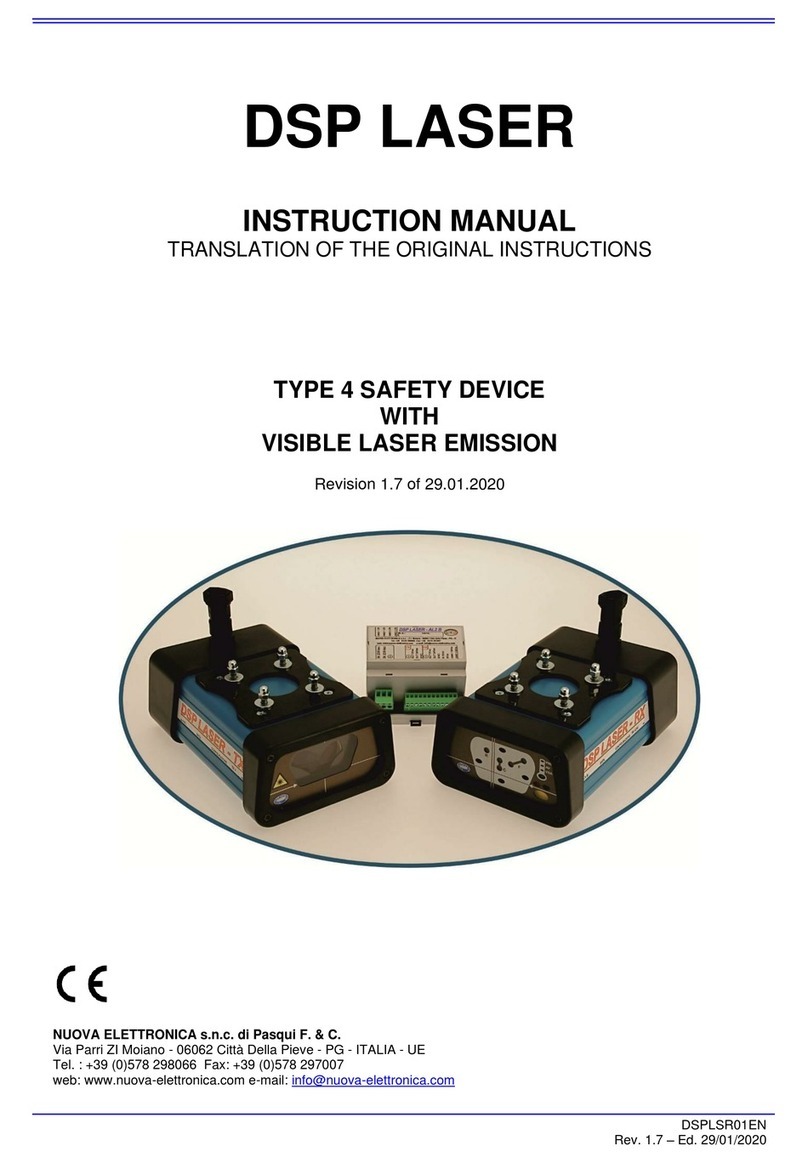
DSP LASER AP with MCS
10.4.2.3. RH and LH side guards and other I/O..........................................................................................45
10.4.2.4. Emergency of auxiliary devices....................................................................................................47
10.4.2.5. Automatic tool clamping...............................................................................................................48
10.4.2.6. Connection to the Encoders monitoring Y1 and Y2.....................................................................49
10.4.2.7. Commmunications to/from CNC via I/O and serial port...............................................................50
10.4.2.8. Machine movement command (upstroke/downstroke/STOP) .....................................................52
10.4.2.9. Hemming......................................................................................................................................55
10.4.2.10. Rear guards..................................................................................................................................56
10.4.2.11. Robot function ..............................................................................................................................57
10.4.3. Electric connection of DSP LASER AP........................................................................58
10.4.4. Electric connection of other front protections...............................................................58
11. Commissioning .........................................................................................................59
11.1. Power supply and first functional verification ...............................................................59
11.2. List, description and programming of MCS parameters...............................................59
11.2.1. List of parameters and description...............................................................................60
11.3. System Test ................................................................................................................67
11.4. First installation of TX and RX.....................................................................................71
11.5. Verification of the stop distance...................................................................................75
11.6. Sheet Edge Acquisition ...............................................................................................75
11.7.Verification of Low Speed and High Speed..................................................................76
11.8. Speed change point and Automuting...........................................................................76
11.9. Blanking Modality of DSP LASER AP..........................................................................80
11.10. Operation in Robot mode.............................................................................................86
12. Residual risks............................................................................................................87
12.1.Risks typical of the laser source ..................................................................................87
12.2. Blanking ......................................................................................................................87
12.3. Risks deriving from dangers of mechanical type..........................................................88
12.3.1. Manual support of the sheet........................................................................................88
12.3.2. Installation and uninstallation of tools ..........................................................................89
12.3.3. Work organization .......................................................................................................89
13. Use .............................................................................................................................90
13.1. Light Indicators............................................................................................................90
13.2. PCV setting .................................................................................................................90
13.3. Verification of stop distance.........................................................................................90
13.4. Sheet Edge Acquisition ...............................................................................................91
13.5. Adjustment after the tool change.................................................................................91
14. Maintenance...............................................................................................................95
14.1. Alarms/errors and possible solution of the problems....................................................95
15. Removal and reinstallation after the repair .............................................................99
16. Technical characteristics........................................................................................100
II DLAM01EN




























